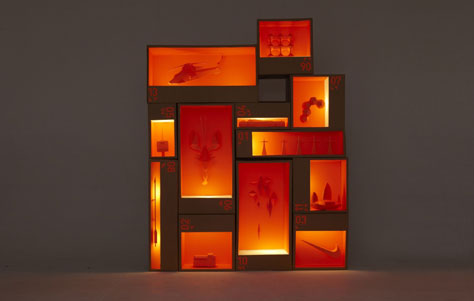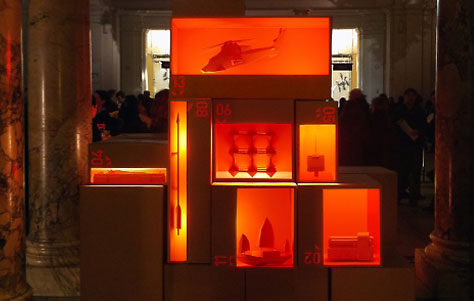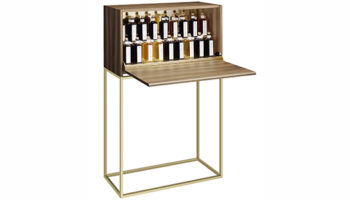Wunderboxes by PostlerFerguson
If fate, or happenstance, or a particularly devout interest in the art and history of collecting has you beneath the cavernous gilded gothic arches of London’s Victoria and Albert Museum in this rainy month of March, you may be surprised by what you see—unless, of course, you came there specifically to see it. The “Wunderboxes” installation by London artists/designers PostlerFerguson is a great, glaring mass of mysterious orange light, certainly anomalous in this sanctum of classical trappings, wherein it might be mistaken for a manifestation of the devil.
Wunderboxes. Designed by PostlerFerguson.
An Examination of the Art and Science of Storage and Display
The shock value is part of the point, as Ian Ferguson’s and Martin Postler’s careful assemblage of curious in cardboard boxes, backlit with what appears to be a veritable flame of light, is strange yet enticing, summoning us all with its sinister tinge to creep forward and have a closer look. What one finds upon said close inspection is a collection of contemporary artifacts, emblems of the techno-socio-cultural fodder that feeds the duo’s work. The installation evolved at V&A’s request for an artistic quantification of PostlerFerguson’s research; the response presents a collection of “differently formatted cardboard boxes displaying a variety of three dimensional models to create an abstract but strangely familiar collection of things: from a tiger attack helicopter to Han Solo in Carbonite, a Lobster to the iconic ‘Nike Swoosh,’ the objects represent the designers’ diverse interests and fields of research from science to popular culture.”


All the objects are three-dimensional models based on images from the internet. And since the display is meant to suggest the variability of the archival archetype, the installation is constantly in flux—each object is apt to be moved or swapped for another; each box is apt to be re-arranged in a new configuration. The result is a moveable feast of a moveable notion. That is to say that part of the point is to engage the different ways our image-laden media affect the artist, to identify and extol which of these objects persist, and how even those that persist are subject to manipulation and re-interpretation.
So go for the visceral punch of the glaring orange glow, or go for the intellectual gloss on this variant of the “Wunderkammer,” but by all means go. Because Wunderboxes is a great addition to the museum’s “Archive Live” series, which examines the means and meaning of the art of collecting: “our perception of personal history, identity and self-representation through memory.”




Leave a Reply